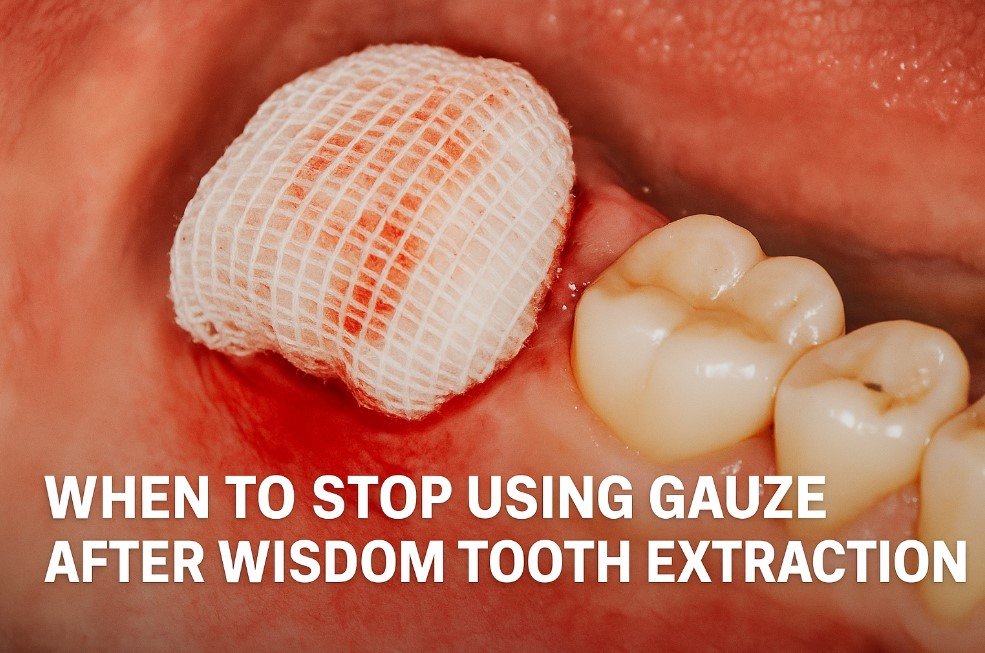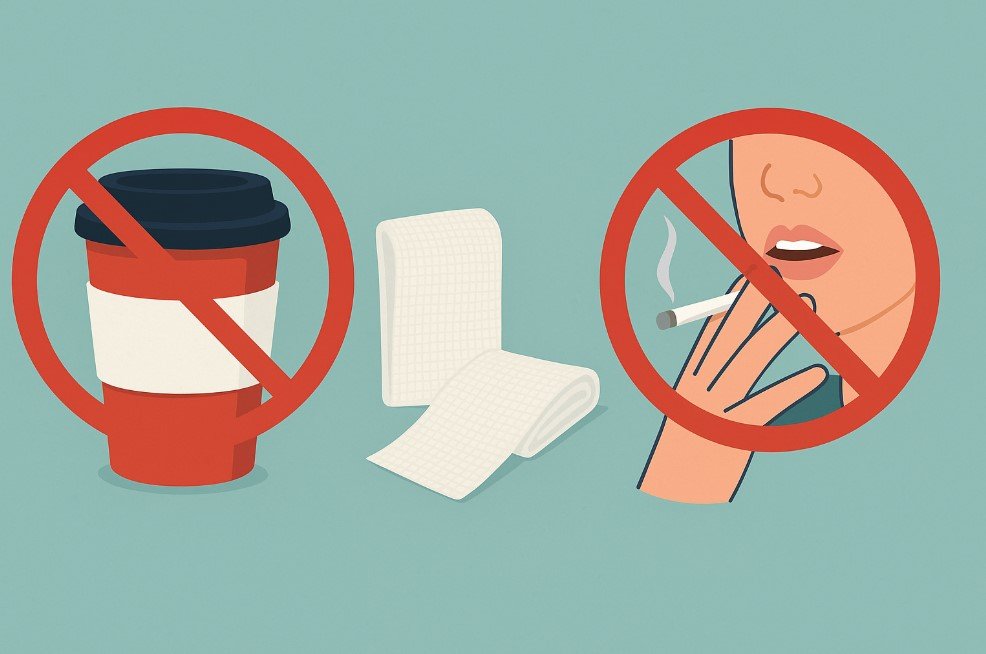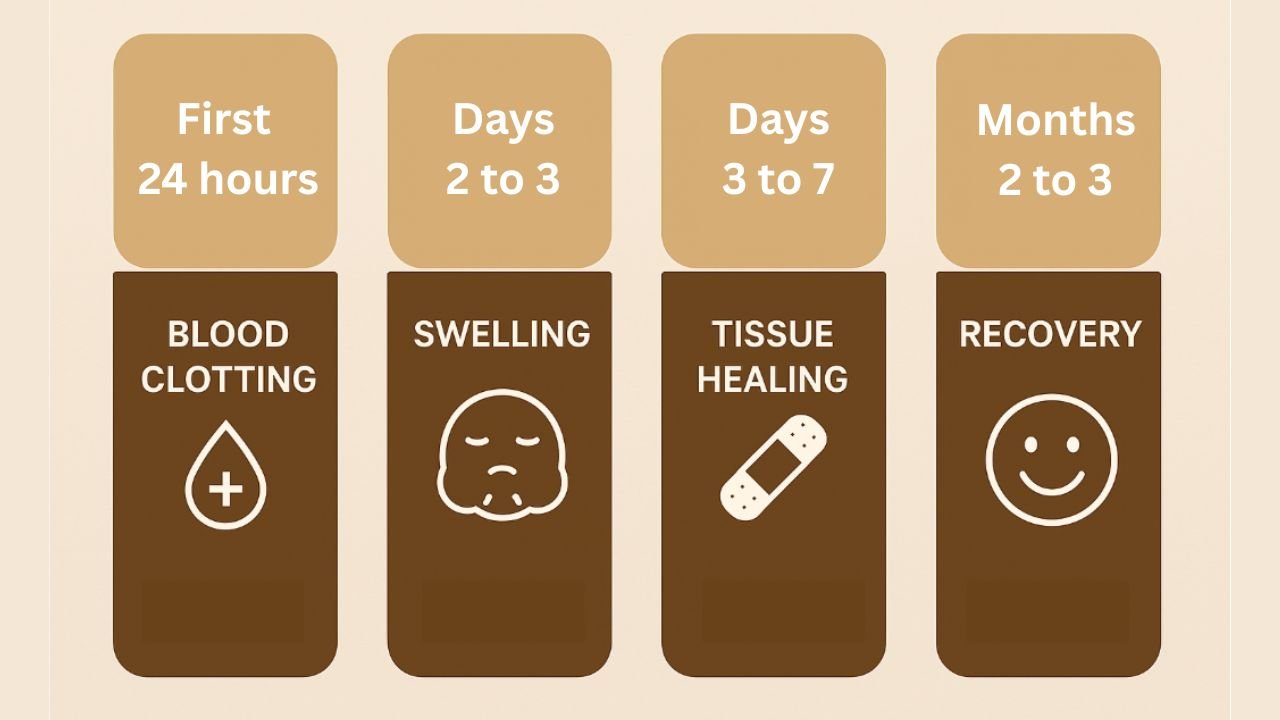Dentist
When to Stop Using Gauze After Wisdom Tooth Extraction

Wisdom tooth extraction is a common dental procedure. After the surgery, it is important to take proper care of your mouth to help the wound heal and prevent complications. One of the first steps after the surgery is placing gauze on the extraction site to help stop bleeding and protect the area. Many patients ask an important question: When should I stop using gauze after wisdom tooth extraction? In this article, we will explain everything you need to know about using gauze, how long to keep it in place, and what to do during the healing process.
Why Gauze Is Used After Wisdom Tooth Extraction
When your wisdom tooth is removed, it leaves an open space in your gums and jawbone. This space is called a socket. Right after the extraction, the socket may bleed as the blood vessels are exposed. To control the bleeding, your dentist or oral surgeon will place a piece of clean, sterile gauze on the area and ask you to bite down gently.
The pressure from biting on the gauze helps the blood form a clot, which is the first and most important step in healing. The clot acts like a natural barrier that protects the wound from infection and allows new tissue to grow.
Without proper clot formation, there is a risk of a painful condition called dry socket, where the bone and nerves become exposed.
How Long Should You Use Gauze?
In most cases, your dentist will tell you to bite on the gauze for 30 to 45 minutes after the procedure. This allows enough time for a stable blood clot to form. If the bleeding continues after 45 minutes, you may be advised to replace the gauze and bite down again for another 30 minutes.
Generally, most patients will not need gauze after the first two to three hours. However, some people may bleed a little longer, depending on how difficult the extraction was, their medical condition, or if they are taking certain medications that affect blood clotting.
If light bleeding or oozing continues for several hours, it is usually normal. In such cases, you can change the gauze every 30 to 60 minutes until the bleeding slows down.
When to Stop Using Gauze
You can stop using gauze when the bleeding has stopped or is very minimal. Here are some clear signs that it is safe to stop:
- The gauze is no longer soaked with blood after 30 to 60 minutes.
- Bleeding slows down to light spotting or pink saliva.
- You feel no active bleeding when you remove the gauze.
It is important not to keep using gauze if there is no bleeding because dry gauze may stick to the clot and pull it out when removed, which can delay healing or lead to dry socket.
What to Do If Bleeding Continues
In some cases, bleeding may continue longer than expected. Here is what you can do if that happens:
- Keep applying fresh gauze every 30 to 60 minutes.
- Apply gentle, steady pressure by biting down on the gauze.
- Sit upright or elevate your head to reduce blood flow to the mouth.
- Avoid spitting, sucking, or rinsing forcefully, as these actions can dislodge the clot.
- Avoid physical activity and stay calm to reduce your heart rate.
If bleeding continues heavily after 4 hours, contact your dentist or oral surgeon for advice.
What Not to Do While Using Gauze

During the first few hours after the extraction, avoid the following:
- Talking too much, which can loosen the gauze.
- Eating or drinking while the gauze is in place.
- Sleeping with gauze in your mouth, as it can be a choking hazard.
- Changing gauze too often, which may interrupt clot formation.
Always follow your dentist’s instructions closely to ensure the best outcome.
How to Place Gauze Correctly
If you need to replace the gauze at home, follow these steps:
- Wash your hands thoroughly.
- Take a clean piece of gauze and fold it into a small, firm square or roll.
- Place the gauze directly over the extraction site.
- Bite down gently but firmly to apply even pressure.
- Leave it in place for 30 to 60 minutes before checking the bleeding.
Proper placement is important. The gauze should cover the socket, not just sit between the teeth.
What Happens After You Stop Using Gauze
Once you no longer need gauze, your focus should shift to protecting the clot and keeping the area clean. For the first 24 to 48 hours, follow these tips:
- Eat soft foods like yogurt, applesauce, and soup.
- Avoid hot, spicy, or crunchy foods that can irritate the wound.
- Drink plenty of water, but avoid using straws.
- Brush your teeth carefully, avoiding the extraction site.
- Avoid smoking or alcohol, as they can delay healing.
- Use any prescribed mouthwash or rinse gently with warm salt water after the first 24 hours.
Signs of Trouble to Watch For
While most people heal without any problems, be aware of these warning signs:
- Heavy bleeding that lasts more than 4 hours.
- Severe pain that gets worse after a few days.
- Bad taste or odor from the extraction site.
- Swelling that increases instead of going down.
- Signs of infection, such as fever or pus.
If you notice any of these symptoms, contact your dentist or oral surgeon immediately.
Understanding Dry Socket
One of the most common complications after wisdom tooth extraction is dry socket. This occurs when the blood clot is dislodged or dissolves too early, exposing the bone and nerves. It can cause intense pain and delay healing.
Using gauze correctly and stopping at the right time reduces the risk of dry socket. Avoiding things like smoking, drinking through straws, and aggressive rinsing also helps protect the clot.
The Healing Timeline After Wisdom Tooth Extraction
Here is a general healing schedule you can expect after your procedure:
- First 24 hours: Bleeding stops, and the clot forms.
- Days 2 to 3: Swelling may peak but will begin to decrease.
- Days 3 to 7: Tissue starts to heal, and pain reduces.
- Weeks 2 to 4: The area continues to close and strengthen.
- Months 2 to 3: Complete healing of the bone and gum.
Following your dentist’s instructions will help ensure smooth healing.

Conclusion
Gauze plays an important role in the first few hours after wisdom tooth extraction. Most people only need to use it for about 30 to 60 minutes, sometimes replacing it a few times during the first few hours. You can stop using gauze once the bleeding has stopped or slowed to a very light ooze. Leaving gauze in for too long can disturb the clot and slow healing.
Pay close attention to your dentist’s advice, watch for signs of problems, and take steps to care for the extraction site during recovery. With proper care, you can heal quickly and avoid complications like dry socket or infection.
-

 Tech2 months ago
Tech2 months agoSora 2 Invite Code: How to Get One (Step-by-Step Guide)
-

 Social Media2 months ago
Social Media2 months agoWhat the “67” TikTok Meme Really Means
-

 Business2 months ago
Business2 months agoDubai Freezone Company Formation: From Name Reservation to Bank Account
-

 Tech2 months ago
Tech2 months agoWhat To Do When Your Business Faces Network Vulnerabilities






